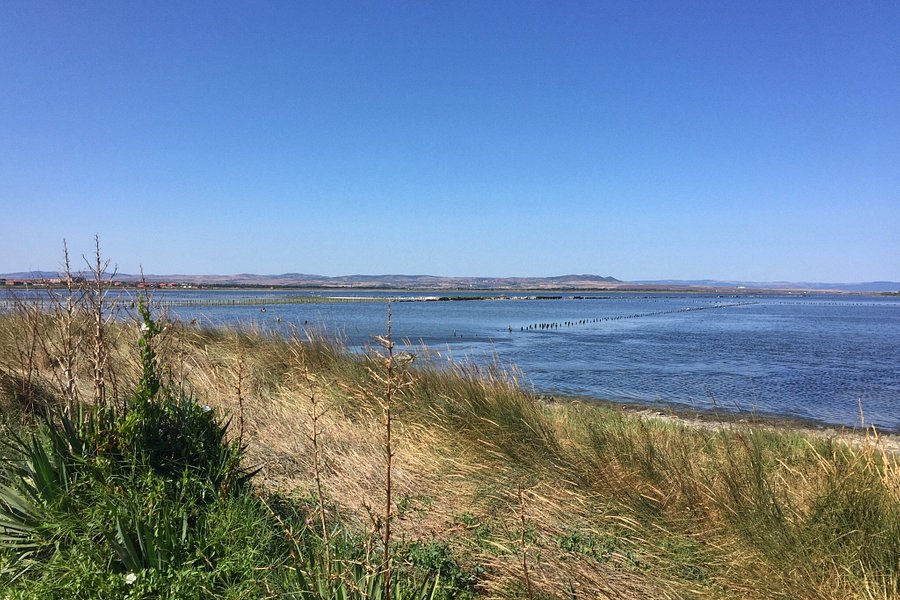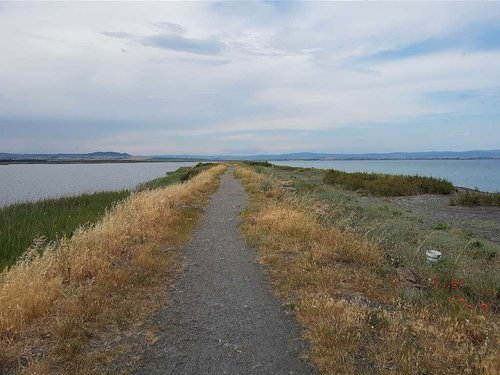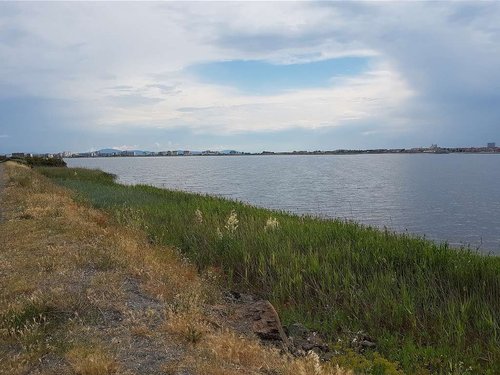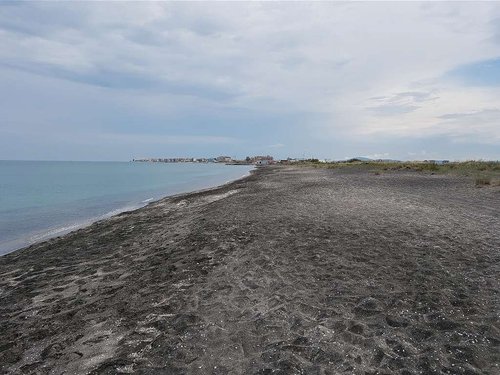Pomorie Lake, Burgas Province, Bulgaria
4.5 (152 reviews) Spent Ranking #2 in Pomorie Bodies of Water

Coastal lagoon with unique healing mud
Pomorie Lake is a coastal lagoon separated from the sea by a natural sand spit and an additional artificial dike. The place is beautiful and the spit is good for a nice relaxing stroll which can bring you as far as the village of Aheloy. The spit is suitable for those who prefer secluded beaches but should not forget that it is not guarded. The lake is also very good for bird-watching as it is on the Via Pontica route and lots of migratory birds from the whole of Europe can be observed. The sand of the spit is black in color which is due to the healing mud extracted from the lake. The mud is unique, different from the kinds of healing mud found in other places around the world, very rich in sulfur and iron, and it heals so many diseases of the musculoskeletal system and the peripheral nervous system, skin diseases and diseases of the reproductive systems.






Address
European Road E 87, Pomorie 8200 Bulgaria
Mobile
Website
http://bulgariatravel.org/en/object/126/Pomorijsko
Current local date and time now
Sunday, May 12, 2024, 19:17
User Ratings
4.5 based on (152 reviews)
Reviews
-
5AEA 5:00 PM Aug 21, 2020
Mud for beauty
The place known of its healthing mud - good for beauty. The mud is on the bottom of the lake. You should take it and spread on whole the body and should stay like this for few minutes (the mud should dry) and then you should wash it with salty water from the lake.
-
4Zhen888 5:00 PM Sep 5, 2018
About the mud, the lake and the луга (water, byproduct of salt production) and more.
As a Bulgarian who visited the lake recently I feel like there is a lot of misinformation on these reviews so I decided to write my own. It might be long but I want it to be as full as possible. Firstly, the lake isn't that hard to go to. I agree it isn't exactly a place you'd like to go on foot but it isn't in the middle of nowhere either. Taxi would gladly take you there (just say "to the salt museum") if you can't figure out the destination yourself. There are signs and you can always ask passing people (I mean, if you speak Bulgarian or Russian (there are a lot of Russian tourists), with other languages it might be harder). Quick map: The moment you go to the entrance to the yard of the salt museum you will notice muddy people to your right. There is the lake. To your left there are benches, shallow "pool" with луга and salt pans. If you go forward first you will find the salt museum and then the visitor centre of the lake. ABOUT THE MUD: 1) The mud itself is free, if you go to the lake. You could buy a bottle on the beach, about 2 leva (about 1 euro) for 2 liters. You could also book mud treatment baths and such in the sanatorium/spas in the city, obviously for higher prices. 2) The deeper into the lake you go, the better mud you are going to take out. Mud is mud but it will be easier to coat your body with the thicker, more gel-like one. 3) If you don't want to go get it yourself (or don't have the ability to) there are a lot of nice people who offer the mud they don't need :) 4) The mud isn't like magic, you cover yourself once and all your pain and aches are gone. Even one will help but 5-6 to 10 times are recommended if you want to escape the well known "cold weather joints pain". You can ask a doctor for recommendation how many times and for how long you should do the procedures. 5) You are supposed to stay covered in the mud 20-30 minutes. In this time it will dry and pull on your skin. Some also notice reddening. 6) Bring a sponge. The mud is hard to remove with bare hands. You could also use some algae instead if you prefer/find yourself in need ? 7) Yes, it smells kind of bad. 8) My skin has never been smoother. LAKE: Hm, not much to say here ? It is not small lake. The water is dark (aforementioned mud on the bottom) and apparently super salty (I haven't tried it since, you know, hundreds of people wash their muddy bodies inside, heh, but it is connected to the sea, so.) Луга: (I don't know translation of the word and I don't want to risk using a wrong one.) Луга is water, byproduct of salt production, rich in different minerals. It contains sodium, potassium, magnesium and other salts. You can find it on the left, before the salt pans. In the water there are wooden troops you can sit on and dangle your legs in the water. You can definitely cover yourself in it but you have to lean back, maybe even sit (on the bottom) since the water is super shallow, knee-depth at best. Used in medical procedures. Known for being antiseptic and anti- inflammatory. SALT PANS: People aren't allowed to step into the salt pans (on the left) and dirty them. The salt is cleaned before packaging but why would you make the workers' job harder? There is a warning sign and rope in front of the salt pans. SALT MUSEUM: If you are interested in learning about the salt production and history you can visit the salt museum. Just walk forward from the entrance and you will notice relatively small building. There is fee of 3 leva for adults and 2 leva for children. Open everyday from 8am(weekdays)/10am(weekend) to 6pm. VISITOR CENTRE (the information below is copied from their site that can be found both in Bulgarian and English. I couldn't say it better, but for short: visit it if you want to learn about the local flora and fauna. Working hours and fee at the end.) "At Pomorie Lake Visitor and Nature Conservation Center you can find information about all aspects of biological diversity, natural resources, and regimes of protection of Pomorie Lake complex of protected areas. Green Balkans’ team will get you acquainted with the conservation activities implemented in the area of the lake and will recommend the best walking destinations. The attractive exhibition at the Center presents interesting facts and amazing photographs of the saline lagoon. On a special monitor installed in the exhibition hall you can watch live video of the big Sandwich Tern colony breeding in the lake. From the second floor of the building you can enjoy the incredible panoramic view of the complex of protected areas, as the most curious visitors can also use spotting scopes and binoculars. " Working hours: 9:30-12:00 and 13:30 -18:30 Monday: closed Fee: 4 leva for adults, 2 leva for children.